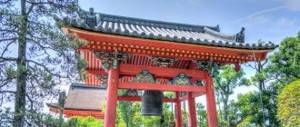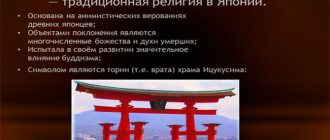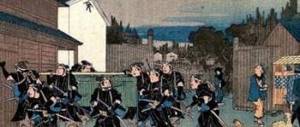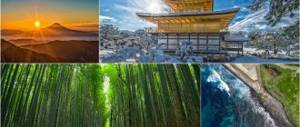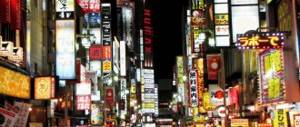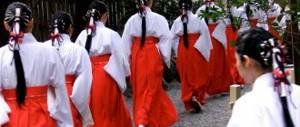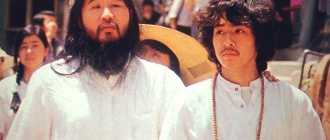What is Shintoism
The Shinto culture originates thousands of years ago - at the advent of a new era. In a sense, it can be called the oldest religion known to us, which has its adherents in modern times.
Formed on the basis of animistic ancient beliefs, Shintoism has now retained many of the features characteristic of primitive societies. This distinguishes it from other cultures where the animistic stage was passed and forgotten a long time ago.
Having absorbed some knowledge from neighboring religions, Shintoism was finally established by the 8th century. The main characteristic of religion can be called its teaching about the spiritual nature of all things.
The name "Shintoism" comes from the word "Shinto", which means "sacred way" or "way of the gods" ("way of the kami"). It is noteworthy that Eastern religions are characterized by the metaphor of the path. Buddhism and Taoism also turn to this symbol.
Kami concept
To understand the concept of kami, it is important to erase the prejudice caused by the word god, limited by the translation that is often used for the word kami. Shintoism does not believe in the concept of an absolute god who is the creator of both humans and nature. It would be best to quote the opinion of Norinaga Motoori, a late 18th century scholar who wrote: “Anything that seemed strikingly impressive, possessed qualities of perfection and virtue, and inspired a sense of awe, was called kami.” Here, the “quality of perfection” refers to a tremendous power that has a great influence on many things. It is beyond human strength or human capabilities and brings a person good luck and happiness, but at the same time it can bring misfortune or evil.
Basics of Shintoism
Shintoism is based on the concept of "kami". It is central to the entire religion, which is why Shintoism is often called the “religion of kami.” Kami is the soul, the spiritual essence of the object. The spirit of kami can be found not only in living beings or partially adjacent plants, but also in other objects and phenomena.
Kami can be good or evil. They ask the good for protection, and try to protect themselves from the evil with the help of amulets. Totemism is one of the characteristic features of Shintoism, along with multiple magical practices.
The concepts of good and evil in Japanese beliefs are very different from European ones, not having an unambiguous character. There are no universal definitions of godly actions; one should proceed from one’s own morality. The main benefit is the ability to live in harmony with oneself and the world around us.
It is important to note that initially bad does not exist. The world was a priori created ideal, and people sinless. But evil spirits bring discord both in hearts and throughout life.
The surrounding world is inhabited by spirits - kami, who, along with people, are full members of life. They embody the souls of deceased ancestors, who are always close to their descendants, watching them, evaluating their actions. A follower of Shintoism must resist demonic forces, seek protection from wise kami and not disrupt the course of life intended by nature.
Shintoists go to shrines to pray, although this is not obligatory. It is believed that a kami lives in every home - people build a small altar to this spirit and bring him offerings so that he will guard the family.
You can find altars for some kami that are not served by priests, but people take care of them themselves. For example, an altar to Inari, the patroness of the home and crafts, is often found. It can be recognized by the image of a fox, which symbolizes this goddess.
Altar of Inari
It is important to undergo a purification ritual before turning to the gods. It includes washing, changing clothes, washing hands, rinsing the mouth. A person who has recently touched something forbidden (blood, a corpse) or even seen it is not allowed to the altar.
The concepts of pure and unclean are of great importance in Shintoism; Shintoists also regularly undergo ritual cleansing from the priest - in this way their inner world is freed from filth.
Nationalism and Emperor Worship
During the Edo period, the government banned Christianity and required all Japanese to become parishioners of Buddhist temples. Specifically, this was expressed in the fact that each family was obliged to determine the Buddhist direction that they profess and register at the nearest Buddhist temple. Buddhist monasticism in its activities was essentially limited only to conducting funeral services. In addition, the government encouraged the spread of Zhuxiian views among the samurai. Zhuxianism is Confucianism reformed by the Chinese thinker Zhu Xi (1130-1200).
Zhuxianism spread both among the townspeople and among the wealthy peasantry. This policy of restricting Buddhism and promoting Zhuxianism contained contradictions that the government itself did not notice.
Zhuxianism has an anti-Buddhist orientation. It denies rebirth and the existence of the soul. In addition, it contradicts the very class system of Japanese society, divided into peasants, military men, artisans and merchants. Zhuxianism teaches that anyone can make it into the ruling class if they study hard.
At the same time, loyalty to the true ruler is highly valued in Zhuxiism, which allowed the idea of veneration of the emperor, who was considered as the “true”, to emerge, as opposed to the shoguns, who were considered usurpers. Thus, Zhuxiism concealed the possibility of destroying the system of government that had developed during the Edo period.
In the Zhuxi environment, the ideas of Ito Jinsai (1627-1705) and Ogyu Soraya (1666-1728) were born, who called for a return to the ideals of Confucius and Mozi, and subsequently the school of “national science” (kokugaku) appeared, whose representatives carried out fundamental research ancient Japanese texts. The most prominent representative of this school, Motoori Norinaga (1730-1801), wrote “Kojikiden” - a detailed study of the Kojiki code, in which he reconstructed Japanese society of the pre-literate period and argued that then there was already a government, and the Japanese revered the emperor, that is, submission to the emperor - is not an idea that came from Zhuxiism, but is inherent in the natural mentality of people. Thus, the road to nationalism based on veneration of the emperor was open to all Japanese.
Shinto mythology
Myths that demonstrate Shinto ideas are contained in the Nihongi and Kojiki collections. The emergence of Shintoism is described in them along with descriptions of the life of two eras. The first of them is the so-called “Era of the Gods”, then – the reign of the emperor, at which the collections end the story.
Nowhere is it mentioned how long the Age of the Gods lasted. It is only known that it began with the creation of the world and continued until the gods transferred power to their descendants - the emperors.
According to Shinto mythology, chaos preceded the creation of the world. It contained everything that exists, but in a formless, disordered form. Gradually it divided into a plain and islands. Then the gods arose and quickly created couples. From marriages, new natural objects and phenomena were born, as well as kami - their souls.
The most famous mythical divine couple are the gods Izanagi and Izanami. It was from their union that the islands, later inhabited by people, arose. From them other gods appeared. The emergence of people is not discussed separately in Shinto myths. The Japanese do not see much difference between living people and kami; their existence has always been parallel. From myths come the origins of many rituals that are strictly observed to this day.
The myth of Susanoo laid the foundation for the rituals of sacrifice. Susanoo, the god of wind, once seriously offended his sister Amaterasu with unworthy behavior. To earn forgiveness, he brought her gifts of thousands of tables with the most exquisite dishes.
Since then, setting a rich table for the mercy of the gods has been one of the traditions. Sacrificial food should belong to different categories, be both prepared and donated by living beings (caviar, eggs). The Japanese even bury treats in the ground, believing that the kami treat them there, or display them in front of temples. Spirits live everywhere, and food is offered to them everywhere too.
Later myths tell of the struggle between gods and kami for power over territories. From there we learn about the god Ninigi, who was the first to descend to earth to rule people. It was from him that the line of emperors descended. Some legends contain information about five more gods ruling the earth, who laid the foundation for other imperial clans.
Prohibition of state Shinto during the occupation
After the end of World War II, state Shinto was prohibited by order of the occupation authorities. Yasukuni Shrine was separated from the state and continued to exist as a civil religious organization. In the minds of the Japanese, even after the war, the perception of the dead as deities and belief in the souls of heroes who died for their country remain.
Perhaps the Japanese themselves are not even aware of how they perceive the gods, and cannot explain it to others. The problem of self-awareness, analysis of one's own worldview and faith in Japan has not yet been solved.
(Originally published in Japanese on February 26, 2014)
Relationships with other religions
Shintoism does not intend to contradict other beliefs and never speaks of their falsity. In its depths, manifestations of many religious teachings exist freely.
Shintoism and Buddhism
Japan is characterized by religious syncretism (the phenomenon in which people profess several religions at once). Therefore, along with Shintoism, the overwhelming number of Japanese also profess Buddhism. This is manifested in the observance of the rituals of two religions at the same time. The vast majority of Japanese celebrate traditional Shinto weddings, and funerals are carried out according to the requirements of Buddhist teachings.
Buddhism, which came to Japan from neighboring China, introduced its own features and itself borrowed some norms from Shintoism. He turned his attention away from the cult of dead ancestors, switching it to more pragmatic things. Along with Buddhism came ideas about statehood and social order.
Considering that the origins of Shintoism in its current form largely come from Buddhism, the two religions have many similarities.
- religions are united by the theme “The Path”. In the first case, this is the path of the Buddha, in the second, the path of the kami;
- the presence of a temple and priests, similar stylistic design of prayer places;
- common gods and rituals that migrated from one religion to another as a result of confusion.
But the two religions still have differences:
- Shintoism has no founder and, moreover, it is impossible to reliably calculate even the age of its appearance. While the era of Buddhism begins with the enlightenment of Buddha;
- Buddhism does not accept the cult of the souls of deceased ancestors;
- Despite the recognition of some Shinto gods, veneration does not extend to inanimate objects sacred to Shinto.
There were many attempts to prevent the mixing of Shintoism and Buddhism - syncretism did not suit one side or the other. But assimilation still happened. Now it is no longer possible for people professing both religions to choose in favor of only one of them.
Shintoism and Christianity
At first glance, these two religions have nothing in common. They cannot be combined into any one category. What they have in common is only a massive following. Although Christianity wins in this regard, especially since it is characterized by different forms and community for many people on different continents.
Shintoism also has several movements, but they are concentrated mainly in one country. It is also not monotheistic - there is no creator and founder of religion. In addition, Shintoism involves imparting spirituality to inanimate objects, which Christianity considers a terrible sin.
But still some common features can be identified. First of all, both religions talk about the soul and consider it important to take care of it. Modesty, the desire not to judge others, to be generous and selfless are also encouraged. Ritual cleansings take place in temples, which have common features. Similar symbolism is characteristic of many religions.
As for the attitude of Shintoists towards Christianity, it has always been wary. The need to serve only one god from the point of view of monotheists seems to be a betrayal of all other gods. Since Shintoism is more than a religion (it is a worldview, part of a culture), Christianity did not take root on Japanese soil.
Merging of ideas about gods and Buddhas in the 13th-19th centuries
During the Heian period (794-1192), the theory of honji suijaku, lit. “original land and manifest trace”, according to which Japanese deities are manifestations of Buddhas and bodhisattvas who appeared in this form in Japan. At the same time, the difference between deities and buddhas disappears. During the Kamakura period (1192-1333), this concept became generally accepted among the Japanese.
If deities are Buddhas, then the veneration of some, of course, is also the veneration of others. The need to somehow separate Buddhist temples from Shinto shrines disappears, the difference between Buddhism and Shintoism is erased. Until the end of the Edo period (1603-1868), the Japanese did not distinguish between deities and Buddhas.
It turns out that after death a person can become both a deity and a Buddha - there is not much difference. The Pure Land Buddhist movement moves away from the problem of rebirth and focuses on posthumous rebirth in the Land of eternal bliss. Amida Buddha, while practicing Buddhist cultivation, made a vow that all living beings would be reborn in his Pure Land of Eternal Bliss (gokuraku jodo). Having been reborn there, they would come closer to achieving nirvana, so believers strove for a posthumous existence in the Pure Land. The idea is spreading that after death a person is reborn there, after which he becomes a Buddha, so the attitude towards the dead as Buddhas has appeared.
This is how the views of the Japanese population on life and death were formed, which still exist today:
- After death, a person becomes a spirit that remains nearby for some time;
- Then he crosses the Sanzu River on his way to the afterlife, after which he becomes a Buddha;
- If a person has a strong attachment to something in this world, or has been greatly offended, angry, etc., he may become a ghost;
- For unrighteous deeds, a person can go to hell, where the ruler of the underworld, Emma, rules, and there the sinner is tormented by devils;
- On the O-bon festival, which is celebrated in mid-August, the souls of the ancestors return to their home;
- The deceased is given a posthumous name, a nameplate is placed in the home Buddhist altar butsudan, prayers are made for him and incense is burned in front of the altar.
This complex of beliefs and rituals mixed Shinto and Buddhist elements, therefore, strictly speaking, at the moment it cannot be called either Shintoism or Buddhism in its pure form.
Modern Shintoism
Currently, Shinto continues to play a vital role in the spiritual life of Japan. There are tens of thousands of temples across the country, and two universities train Shinto clergy. Traditional rituals are regularly performed in churches, and religious holidays are widely celebrated.
But traditions are observed not only in temples. Shinto rituals have become firmly established in the life of modern Japanese, and he follows them. It is noteworthy that even that part of the people who do not consider themselves Shintoists cannot avoid not performing traditional rituals: cleansing the house, completing transactions with a loud clap in the palm, etc.
Despite the high development of the Land of the Rising Sun, more than 90% formally fulfill all the requirements of Shintoism. This is largely due to the fact that Shintoism does not interfere with the development of high technology and does not put forward any prohibitions on social life. This religion is a purely individual faith that addresses the personal moral component of a person.
Moreover, even denying your religiosity, it is impossible to deny culture and not fulfill those cultural requirements that were absorbed from childhood. That is why only a person brought up in a characteristic environment can be a true Shintoist.
Power in the Yamato state and the conversion of the aristocracy to Buddhism
The state association of Yamato, which emerged in the 3rd century, was formed from a tribal union formed around families who worshiped the solar goddess Amaterasu as the supreme deity. The tribes that joined them had their own ancestral deities, which were worshiped as ancestors (for example, the deity Ookuninushi in Izumo). As part of the tribal union, these deities were introduced into general mythology.
In the 8th century, the first mythological and chronicle collections “Kojiki” and “Nihon Shoki” were written. They show Amaterasu as the main deity of the pantheon, and claim that the emperors are her descendants, having the exclusive hereditary right to conduct rites of worship of the foremother.
The result of this was the exclusion of other influential families from the possibility of worshiping the supreme deity and the highest political power. Yet, unlike the people of Israel, who accepted monotheism and abandoned faith in other deities, the Yamato government did not get rid of polytheism, giving other deities places of varying importance in the pantheon. The coexistence of different deities became a reflection of the coexistence of different families in the state system.
The peculiarity of Buddhism is that it is not associated with the veneration of deities and does not belong to the system of cults associated with Amaterasu. Therefore, in conditions when the cult of Amaterasu became the basis of reorganized Shintoism and the conduct of rituals of veneration of Amaterasu was the exclusive right of the supreme power, influential families that were excluded from this system were able to freely practice Buddhism. Such families were formed in various regions of the Yamato state, received positions and estates as hereditary possessions, and became the local aristocracy. Such an aristocracy, as a rule, accepted Buddhism and built Buddhist temples where they prayed for good rebirths. A new concept of the afterlife appears, which did not exist in Shintoism - after death a person becomes a Buddha. On the other hand, for peasants who worked on estates owned by the aristocracy, temples and sanctuaries, the traditional cults of local deities were closer.
Shinto shrines
There are many Shinto shrines throughout Japan. Jinja (神社) is a Shinto shrine, along with the area around it. More often, “jinja” refers only to the sanctuary itself. Each shrine has been revered by the people of the area since its founding and has maintained close contact with the local community through religious events and festivals.
Deeply indebted to nature, the Japanese people recognized its spiritual powers that brought life, fertility and prosperity. Divine spirits dwell throughout nature and bring joy and generosity into our lives. Mountains, deep valleys and the vast ocean are seen as the abode of the divine. Other natural objects, such as majestic trees and special rocks, are also considered symbols of divine spirits. Because of this close contact with nature and the divine, the Japanese people continue to respect and be inspired by its spiritual beauty. At the same time, the Japanese have long revered their ancestors, who made enormous contributions to the good of society.
The main attractions of Kyoto. Top 5
In ancient times, rituals were performed mainly in the open air. Mysterious, unusual and stunningly beautiful places were considered the habitat of the kami. House buildings as a place for holding rituals were quite rare. It was assumed that the kami was not constantly in the place of prayer, but could go there if he considered it necessary to listen to the requests of people. Since kami are incorporeal, in order to contact people they need an object that will become their physical embodiment. Such items are called shintai. Initially, such noticeable objects as old sakaki trees and iwakura rocks served as shintai.
Rituals
Over time, specific boundaries began to appear at the place where the kami converged. These boundaries can be marked by trees planted along the perimeter, called himorogi. Borders can also be lined with stones or fenced with rope. In this case they are called iwasaka. Both words can also be synonymous with the sanctuary itself. Along with the borders, passages appeared in them, marked with the help of torii. Later, mihasir pillars dug into the ground also began to be used as shintai.
Torii
However, when Buddhism appeared in Japan, people began to worship images of Buddha placed in buildings. It is believed that Shinto, influenced by this style, began to embody the spirit of the kami in the building, and over time this became a popular custom.
The strengthening of imperial power and the expansion of the influence of the Amaterasu cult led to the fact that mirrors became popular in shintai. The mirror was hung in front of the room with the body of the god, as an external symbol of holiness. Since the end of the 19th century, it has already become the same symbol of Shintoism as the cross for Christianity. Other two symbols of the imperial family - the sword and jasper beads - also gained popularity.
At various turning points in life, Japanese people often make visits to shrines to pray for divine protection and to thank the deities for their help. These rites of passage for the Japanese begin with the hatsumiya rite. This is a ceremony to celebrate the first visit of a newborn child to the temple, who must be recognized as a new member of the community by the local deity. Next comes a festival called Shichi-go-san. Boys aged five and girls in their third and seventh year visit the shrine to report their healthy development and receive divine blessings.
Special rites of purification and blessing are also required when a young person reaches his maturity. However, the highlight of life is the marriage ceremony, when the bride and groom exchange ritual cups of sake in front of the deity and take the oath of husband and wife. Purification rituals and prayers are performed on many other occasions. By repeating such life cycle rituals, the Japanese seek a way of life full of peace and joy in communion with the divine.
Views: 2,449
Share link:
- Tweet
- Share posts on Tumblr
- Telegram
- More
- by email
- Seal
Japanese beliefs
The ancient Japanese never separated spiritual and material existence, but believed that both were inseparable, viewing everything in a spiritual sense. In other words, they did not draw a line between a particular object and the work of that object. According to Shinto cosmology, the world is created with the appearance of a single kami, representing the universe, and then the kami of birth and growth appear. From the sky, a male Kami and a female Kami appear who give birth to various deities, the land of Japan and its nature, as well as its people. The belief of Shintoism begins with the belief in this mythology. Thus, Shintoism does not recognize the difference or cessation of use of kami, nature or people.
